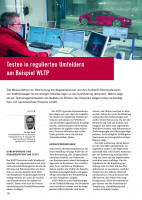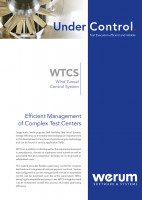Increase performance and efficiency in testing with the test bed automation WTCS
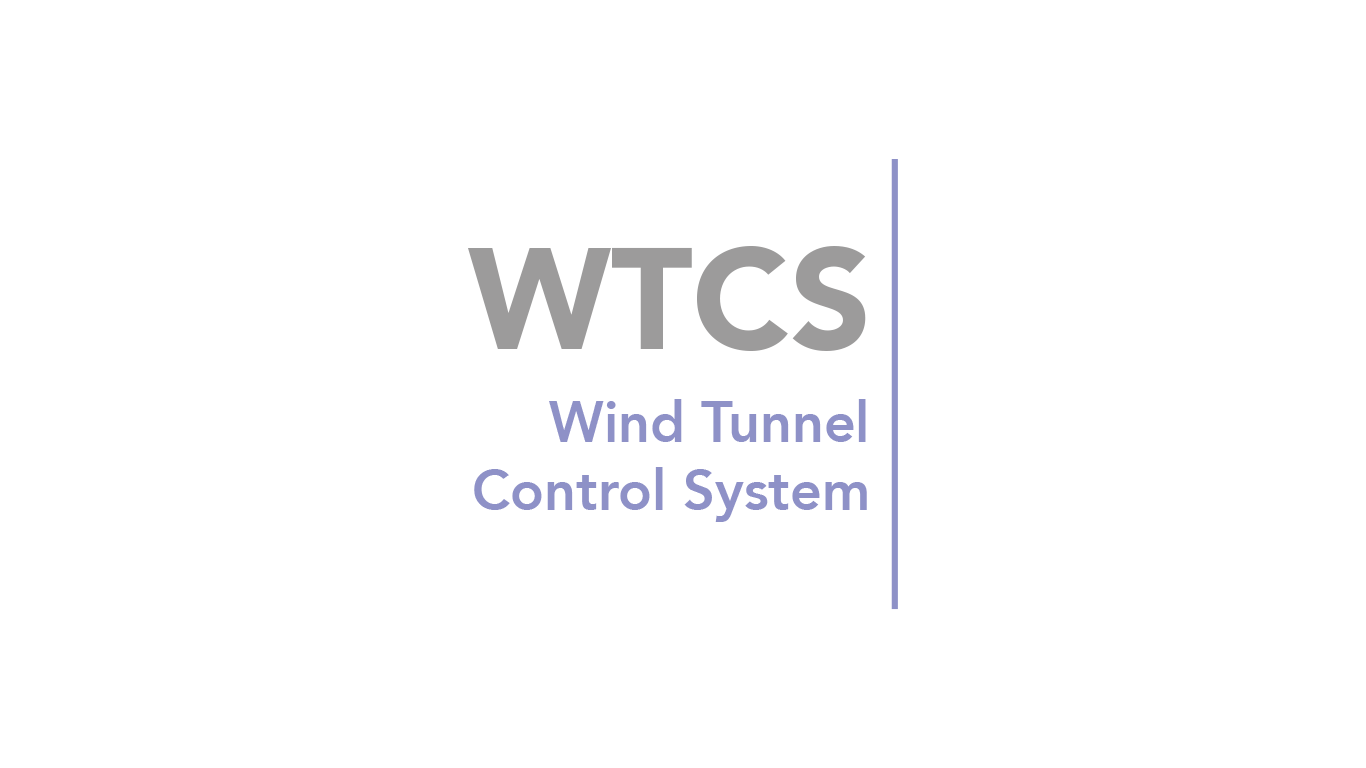
In recent years, test bed automation has had an ever-increasing impact on industrial production and product development. One of the key technologies in this field is the Wind Tunnel Control System (WTCS).
WTCS is a powerful platform that has been used for many years in countless aeroacoustic and thermal wind tunnels, test chambers and functional test stands. It offers you sophisticated test bed automation for your large-scale and component test beds, enabling you to perform your tests efficiently and with process reliability. The test bed automation WTCS contributes significantly to improving the performance and quality of your product validation, reducing costs and supporting the development of new technologies.
Does your test bed automation already meet all your requirements?

As you know, reliable test bed automation is an important component for the development and validation of your products. It enables you to test your products faster, more accurately and more cost-effectively. Unfortunately, many test departments still face the following challenges when they have not yet found suitable automation for their test beds that meets their needs:
- Reduce development costs: Product development should be carried out cost-effectively. But how do you prevent high costs due to constantly increasing and changing testing requirements?
- Simplify data exchange between systems: There are often different IT systems for test planning, test execution and data management. This often means that data has to be exchanged manually between the systems. How do you make this process efficient and secure?
- Optimize test times: Successive preparation and test phases usually lead to idle times. How can effective test times be increased?
- Ensure transparency and traceability: For quality assurance, it is necessary to store all data in a retrievable and traceable form at all times. So how can you ensure both the reproducibility of tests and their transparency?
WTCS was developed so that you can reliably master these and other challenges and efficiently increase the quality of your tests in product development and product validation. Why is WTCS the optimal test bed automation for you?
This is why WTCS is the ideal test bed automation system if you have high quality requirements and want to use valuable resources efficiently
WTCS is the universal automation system for your test bed. By integrating all subsystems, all relevant parameters are available at any time. You can visualize all information clearly. WTCS gives you full manual control over all test bed functions. At the same time, you have comprehensive automation options with test sequencers to control your test sequence and monitoring processes. Further automations relieve you of many time-consuming routine tasks, leaving you more time for more complex tasks with higher priority. This makes your processes more efficient and even allows you to precondition your test bed unattended and fully automatically.
WTCS is modular and can be configured according to your requirements. You even carry out the adaptation of the subsystem connection quickly and cost-effectively: with the common industry standards supported by WTCS such as Modbus, PROFINET, DoIP, CAN, LIN, but also binary or text-based TCP and UDP protocols. So you are well prepared for the future.
In WTCS, new workflows, new functions and adaptations to the data model can be easily implemented at low cost using additional platform modules and simple configuration. Even highly individual requirements can be easily integrated with add-on modules.
WTCS offers you end-to-end and process-secure management and execution of tests and flexibly and reliably integrates all the different subsystems and measurement systems of your test bed. It offers you interfaces to external test planning and data management systems such as Werum's HyperTest® Boost, but also to systems from other providers, to which you can connect it seamlessly. This makes manual data transfers a thing of the past.
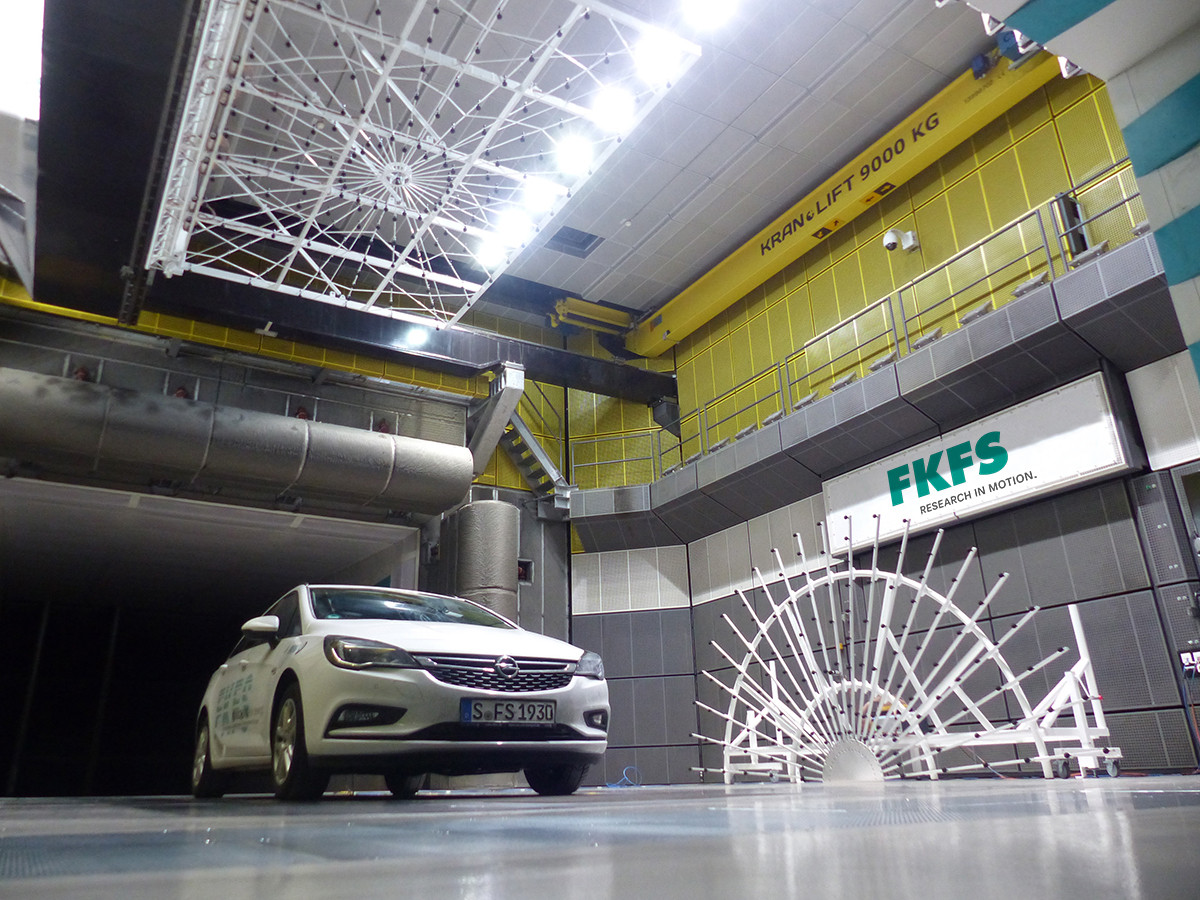
WTCS also supports you in minimizing idle times at the test bed. On the one hand, further tests can already be prepared in parallel to ongoing tests. On the other hand, WTCS offers you the possibility to provide assembly and modification instructions for the responsible employees so that you can shorten your setup times and make optimal use of your test bed. And finally, the automated execution of test sequences ensures maximum efficiency during measurements.
With WTCS, you have a complete overview of all relevant data: All events are seamlessly documented and can be retrieved at any time. You ensure the reproducibility of your tests through the reusability of configurations and test sequences.
Automatically gain full control over your test bed and data
WTCS is the central information and operating platform for your test bed. By integrating all components and subsystems, you receive all relevant metadata and parameters. This information is available to you for calculations, displays and data recording and can also be used for automated sequence control.
Data is recorded centrally on a test-by-test basis, so results are always stored in the correct test context. For automatic "post-test" analyses, you can combine data sets from the automation system with data recorded locally in the subsystems. In this way, you extend the test context and ensure the completeness of all data at all times.
The full test context along with change tracking, provides complete documentation and gives you full control over who can access the data.
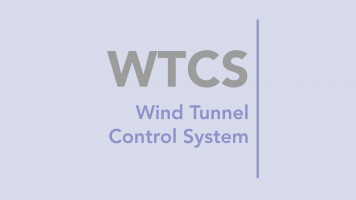
WTCS
WTCS is a wide-ranging platform that inherently covers many aspects of modern test bed automation. It enables the cooperation between test bed operator and test bed customer while integrating all subsystems.
Easy automation of your test bed
WTCS provides various test sequencers for the execution of test sequences. Depending on the application, you can select the appropriate component: This ranges from simple step chains and interpolation point-based profiles to high-resolution driving profiles and extremely powerful test execution machines for highly complex test methods.
With further automation functions of WTCS, you can, for example, monitor any parameters for limit values and have suitable sequences executed in response to limit value violations.
Maximum efficiency for your precious test time on the test bed
Your test bed should be used optimally in any case. WTCS offers you extensive automation of all routine tasks, such as evaluations, data archiving and administrative tasks. Together with seamless data exchange with global test and data management systems, this gives you the best conditions for maximizing your productively usable time in the test field.
Online calculations with appropriate monitoring algorithms and automatically executed "post-test" analysis allow you to detect errors and deviations at an early stage and then immediately stop the test and repeat it in a time-efficient manner, as long as the DUT is still available to you in the current configuration without any loss due to rebuild times.
Since it is possible to use several operator stations simultaneously in different roles, test bed operators and test engineers can work together directly via the WTCS. To make the best use of test bed time, the engineer can evaluate the data from the previous test, monitor the current live data of the test in progress, and prepare another test while the test bed operator is already performing the next test at the same time.
In order to make optimum use of the pure test time, test sequences are structured in such a way that the next setpoints can be approached directly after a measurement step, while the data from the previous step is stored and processed asynchronously in the background.
A special feature is the dynamic control of the measurement duration: Based on defined stability criteria, a measurement is terminated prematurely as soon as the measurement data has stabilized. If the preset maximum duration has been reached, the measurement step ends automatically as planned. If the stability criteria were not reached as expected, this is documented in the result data of the measurement step for quality assurance purposes. Based on these findings, test sequences can be optimized step by step.
Significantly reduce manual errors and thus increase quality
WTCS significantly reduces manual errors through the comprehensive automation of tasks. With suitable interfaces, you can integrate WTCS into the corporate processes of your testing and development departments and thus establish data flows without media breaks for the import of test orders and the transfer of result data to archiving systems.
Post-test" data evaluations and report generation also run completely automatically. You can use the metadata of the test description to determine exactly which evaluations are to be performed and which reports are to be generated for the specific test. Evaluations can also contain rule-based checks that analyze test results for compliance with test requirements. In this way, manual errors in test configuration and execution can be detected and immediately corrected in a repeated test.
The powerful local test management of the system summarizes all information about a test. All changes and work steps are documented by WTCS in a traceable manner. In this way, WTCS supports standard-compliant work, e.g. according to ISO 17025 or for tests according to measurement methods such as WLTP.
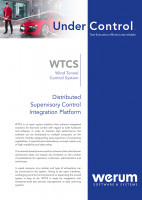
WTCS - Distributed Supervisory Control Integration Platform
With its modular core functions for test and configuration data management, test sequence control including analysis, error management, centralized data storage, online data distribution as well as online calculation and visualization WTCS makes it possible to build up control systems that can be adjusted to customer-specific task settings just by modifying the system configuration.
Reduce cost with an efficient and established modular system
With its modular design and the modules available for many applications, the WTCS platform offers the possibility to automate a wide variety of test beds. These include aeroacoustic wind tunnels, thermal test beds and functional test beds for individual components and assemblies.
The standardization of automation systems in the test field with the WTCS platform significantly reduces development efforts and facilitates the integration of different test beds into the higher-level test process.
The use of subsystem drivers as a hardware abstraction layer (HAL) also allows you to easily add or replace subsystems without having to change other subsystems, methods or basic system properties. The exchange is done quickly and safely by adjusting the driver configuration.
The broad base of WTCS users fosters the continuous development of basic components. So you get exactly the enhancements you need. New use cases from practical life give rise to new software modules. All users can purchase licenses for these new components and thus benefit from the latest developments.
As a proven platform with many years of practical use, you can rely on WTCS. The use in many installations ensures a high test coverage for further development and a high quality standard of all components due to the breadth of the application spectrum.
Technical paper: “Software-Supported Processes for Aerodynamic Homologation of Vehicles”
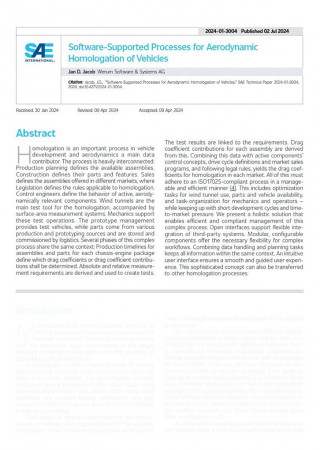
As part of the "FKFS 2024 Stuttgart International Symposium", a technical paper by Dr. Jan Jacob (Business Development Werum) has been published.
The author presents a holistic software solution that enables efficient and compliant management of the aerodynamic homologation process.
The paper can be purchased on the SAE International website: https://www.sae.org/publications/technical-papers/content/2024-01-3004/
Jacob, J., "Software-Supported Processes for Aerodynamic Homologation of Vehicles," SAE Technical Paper 2024-01-3004, 2024, https://doi.org/10.4271/2024-01-3004.
These practical features facilitate smooth and efficient operation of your test beds
WTCS provides you with all the functions you need to run compact component test beds, large-scale test beds and test field monitoring systems smoothly and efficiently:
WTCS seamlessly integrates all subsystems of the test bed based on interface drivers. The drivers serve as a hardware abstraction layer (HAL) that isolates the individual subsystems and enables an easy exchange of the individual subsystems over the test bed's entire lifecycle. That means, the subsystems are kept independent of each other, which facilitates the commissioning of the subsystems as they can individually be tested and integrated into the system. In the event that one of the subsystems fails, the rest of the test bed remains operational.
The communication protocols of the individual subsystems vary widely. Here, WTCS is the mediator between the worlds: both established industry standards such as PROFINET and Modbus and proprietary protocols based on TCP/IP, for example, are supported or can be integrated individually.
By integrating the subsystems that control the test bed as well as the measurement systems for data acquisition, WTCS acts as the central instance that combines, monitors and controls all data and processes on the test bed.
The user interface of WTCS provides the user with access to all subsystems and measurement systems. Each parameter can be influenced manually. To ensure safe operation, input limits can be taken into account depending on the test bed's operating states. Thus, the user at all times has full control over the entire test bed in one central system.
WTCS provides different test sequencers for automatic sequences that are tailored to the respective use cases. Just like users with manual control, the test sequencers too can access all parameters. A combination of automated sequences and manual control is also possible. This means, for example, that test sequences can be stopped in the event of an error in order to make manual corrections and to resume the sequence again afterwards. Manual fine adjustments in automated sequences are also possible. Both manual and automatic specifications are recorded together to ensure full documentation of the actual test execution status at all times.
The powerful options of the test sequencer of WTCS also allow parallel processes that can be merged again based on synchronization points – thereby allowing for the mapping of concurrencies. In the background, sequence- and DUT-dependent monitoring operations can be performed, for example to influence or abort sequences.
Moreover, the development of test sequences as well-defined, fixed test methods by test field engineers suits to increase quality. The test bed operators just select the ready-made methods in order to parameterize them. This way of working increases efficiency as the susceptibility to errors is low and the work progress on the test bed is faster.
WTCS offers an integrated test management for local tasks at the test bed as well as interfaces that ensure connection with higher-level test planning and data management tools. So, WTCS can easily be integrated into higher-level company processes. WTCS works perfectly with Werum's test planning and process management system HyperTest. Using the existing interfaces, though, it can just the same be connected to other existing process management systems without any problem.
The WTCS Test Management module offers the complete description of tests including all metadata about the test, the device under test (short: DUT), the equipment used and other information that can be configured specifically for the application. A test project is logically divided into test sessions, which correspond to the period of time a DUT has on the test bed, and test runs, which describe the execution of a specific test procedure. In test runs, test steps can be used as sub-units for quasi-static measurements or profile repetitions in order to structure the data acquisition even more detailed.
The test management is a fully integrated database-based solution that provides templates for the efficient reuse of information and comprehensive research options for users. Comprehensive documentation of test execution and a complete change history make it possible to comply with important quality standards like ISO 17025 and to work in line with measurement regulations like WLTP.
WTCS supports simultaneous operation from several workstations. This allows close cooperation between test bed operators and development engineers in large test beds to achieve an efficient use of the available test bed time and an optimal provision of data to different user groups. For better user support, the presentation of information can be tailored to the individual user roles.
WTCS provides internal directory structures for data recording which correspond to the test organization structure of the test management. On the one hand, the data accruing in the test bed automation is recorded and, on the other hand, the data recorded locally by the measurement systems is automatically fetched from the measurement systems. To enable the measurement systems to adequately maintain the data, WTCS also makes the metadata of the test management available to all subsystems via corresponding interface drivers. The directory structures for data acquisition and storage can be structured in more detail by means of configuration, e.g. according to measurement data, evaluations, reports, photos etc.
The roles and rights system of WTCS manages the access to directories and files and ensures that only authorized users can view the data on the test bed. This also allows operation by different internal and external customers without data of the different user groups becoming visible to unauthorized persons. At the same time, users always have full access to the data of the current test. To ensure smooth customer operation on the test bed, access is provided in the simplest form via constant network shares. To increase efficiency and quality, WTCS supports automatic background processes for archiving and hard-disk cleanup, which relieve operating personnel of time-consuming routine tasks and avoid manual errors.
WTCS provides for seamless integration of evaluation tools into the work process. Standard tools like NI DIAdem™ are automated by WTCS in such a way that "post-test" evaluations and report generation can be performed entirely without manual intervention directly after the measurement data were acquired. Comprehensive basic scripts for file handling and data processing can be used to create individual evaluations efficiently and in no time. The test management starts the analyses directly at the end of test steps, test runs or test sessions. The metadata from the test management can also be included in the analyses. So it is possible, for example, to select the report language or to determine the range of evaluation steps depending on the test type.
In the evaluations, data can be normalized, merged or evaluated according to standard criteria, for example. PDF reports can be generated as part of the evaluation, which can be used as test certificates in the gapless documentation, e.g. according to ISO 17025 or for DUT homologations. If test certificates and documentation are kept in a higher-level system like HyperTest Boost, for example, or another test process management system, data and reports can be transferred to this system using the available interfaces of WTCS.
WTCS can be fully integrated into the corporate testing process. The automatic transfer of test orders from test management systems, e.g. from HyperTest Boost or any other test process management system, avoids manual transfer errors and takes tedious routine work off the users' shoulders. The bidirectional exchange of master data like persons, DUTs, test sequences or analysis procedures minimizes the maintenance effort and increases data consistency.
Connecting further systems like archive systems or data management systems guarantees a fully automated, error-free and seamless transfer of result data to corporate systems. All meta information of the test together with change history, comments, measurement data, evaluations, reports and any accompanying documents like photos, for example, are treated as one structured and comprehensive data set in order to ensure data consistency and quality.
WTCS offers a variety of practice-oriented standard functions for test configuration and execution. Interface processes can be used not only to integrate subsystems within the test bed. WCTS can also be connected to company-wide test management and data management solutions. In addition, the WTCS modules offer standard components to look after any aspects of manual and automated test bed control. Very specific use cases can be covered by implementing further additional components. For this purpose, programming interfaces (APIs) to all important core functions are available in common programming languages.
For use in a wide range of test beds and test fields, WTCS offers a high degree of customization options. In addition to the selection of the modules as the first individualization step, the modules themselves are also largely configurable. Users can further configure the modules in convenient administration dialogs and thus adapt them without spending a great deal of time and money.
Comprehensive automatic processes, such as data archiving, hard-disk cleanup and system monitoring, are largely automated and minimize administrative work. For the rest of the manual tasks, administrators are provided with convenient administration dialogs to complete the tasks as efficiently, intuitively and accurate as possible. As a result, WTCS-based automation systems can be supported directly by the specialist departments in many test areas without the need for service agreements with central IT departments. This ensures short decision-making paths and fast response times. A maintenance and support contract ensures availability and continuous further development.
Modules
Having a modular structure, WTCS offers a base package and a set of optional modules to adjust the platform to exactly fit your needs:
Base package
The WTCS Data Server is used for central data distribution. The Data Server's main component is the Value Pool, in which the current values for all parameters of the test bed are provided. All authorized processes can read these values or write new values for the configured parameters into the Value Pool. The connected Security Server manages the access authorizations. The integrated Data Logger stores all values in a ring buffer database in chronological order and independent of test execution. They can be used for analysis purposes. The WTCS Data Server also includes a calculation engine that enables the parameter values in the Value Pool to be converted into new values. Formulas and conditions can be used in these calculations. So, new values can be derived from measured values, for example, raw measured values can be offset against a calibration value or complex state changes in the system can be visualized for the user in a simple and understandable fashion.
The WTCS Data Exporter serves the purpose of test-related data recording. It is commanded by the Test Sequencer and performs the recording of parameter values during a test sequence or a test step. Different parameter sets for different tests can be recorded via so-called export lists. Several export lists can be used simultaneously as an export configuration.
Data is recorded in files. The directories are provided by the WTCS Test Management on the WTCS Server. Different file formats are available for data recording purposes: in addition to text-based formats like CSV, recordings can also be made in binary formats like TDMS.
The WTCS Order Loader represents the interface between the test bed and the corporate test planning and test process management. It can retrieve test orders for the test bed from a test process management system and transfer them to the WTCS Test Management for further processing and execution.
In order to align master data, the WTCS Order Loader can exchange lists of DUTs, components, test sequences, analysis methods etc. with the global test management.
Both a file-based method as well as a web service provided by the global test management can be used for transmission where an XML structure is used as data format.
Werum's test process management system HyperTest Boost already comes with the appropriate interface for data exchange, but data exchange with third-party systems is no problem either since Werum offers the HyperTest Test Bed Adapter as universal software solution to connect test beds to the testing process.
The WTCS Archiver acts as interface between the test bed and an archiving system or a data management solution. It cyclically queries the completed tests from WTCS Test Management and packs the data of the tests found into archive packages that can be transferred to the archive or data management system together with a description file containing all the tests' metadata.
The transfer is done file-based via drives for file exchange. On successful transfer of the data to be archived, the WTCS Archiver also carries out the secure deletion of result data from the WTCS Server as soon as the configurable retention time for the data has expired.
The WTCS Event Management performs the continuous monitoring of parameters in the Value Pool. If limit violations occur, for example, they are visualized in the user interface. It is also possible to have actions triggered by specific events that can be defined by rules. Such an action can be the sending of an e-mail at certain hard disk fill levels, but it can also be the abortion of test sequences in certain operating situations. In addition, all error messages from subsystems and WTCS processes are collected on the WTCS Server via event management and visualized for the user in the interface. Another task of the WTCS Event Management is to collect all error messages of subsystems and WTCS processes and to visualize them for the user in the interface.
The WTCS Graphical User Interface is a framework that provides windows and displays for standard views, supplemented by the administration dialogs and the displays of the other WTCS modules. In addition, individual, application-specific displays can be implemented to make sure the operator is provided with the optimal presentation of test bed information.
Display configurations once set up by the user can be saved as so-called workspaces to be recalled when needed. It is also possible to define a default workspace the application is started with, e.g. to welcome every user with a well-defined and familiar overview when starting the application.
The WTCS Analysis Framework controls analysis programs, such as NI DIAdem™, and also provides corresponding libraries with basic scripts for NI DIAdem™. The Analysis Framework is controlled by the WTCS Test Management and can subject the available data to an individual data analysis at the end of a test session, test run or test step. The analyses can be used for the purposes of data normalization, checks for conformity to standards, calculations of result data or the creation of test reports.
Optional modules
The modular, configurable subsystem drivers seamlessly integrate the subsystems and measurement systems of the test bed into the automation system. They form the hardware abstraction layer to decouple the individual subsystems from each other. To facilitate commissioning, the drivers are stand-alone-capable having their own interfaces and can therefore be used for interface tests in early setup phases.
The drivers are configured to communicate with the respective subsystem. For this purpose, the communication protocol is selected from the existing interface plug-ins or a specific plug-in for special protocols is implemented. Furthermore, the data to be exchanged between the subsystem and the driver is configured.
WTCS Test Management organizes the meta information on test orders, DUTs and any other test-related circumstances. In addition to pure metadata, documents and images can be stored to enable comprehensive documentation of the tests. The test management serves to ensure efficient use of the test bed and quality assurance purposes by documenting the execution. In addition to the actual database-based test management, this module also includes administration components. They create the necessary directory structures on the WTCS Server for the measurement data and accompanying documents during the processing of the tests, provide network shares for direct data access to the current test or retrieve result data files from subsystems. Likewise, the test management and the Test Sequencer together control the data recording by commanding the Data Exporter.
Two test sequencers are available for WTCS, which are ready to be used in a wide range of applications.
The WTCS "Basic" Test Sequencer allows the compilation of sequential runs from a fixed set of basic steps in the WTCS user interface and the simple and intuitive execution of these sequences. If there are only simple requirements on test sequences, the Basic Test Sequencer is the right choice.
The WTCS "Advanced" Test Sequencer, by contrast, suits to cover rather complex requirements. It consists of a server-sided execution component and a user interface for configuration and execution. Using NI TestStand™ as test execution engine, extremely complex sequences can be created. For this purpose, experienced users develop short sequences – so-called methods – in NI TestStand™. The test bed operator assembles the methods and parameterizes them in a configuration view of the WTCS user interface. Sequences can be nested or repetitive procedures can be configured. This is a process-safe, convenient and efficient way to create highly complex test sequences.
Would you like an established test bed automation platform to execute your tests faster, more precisely and more cost-efficiently?
Click here to learn without any engagement how WTCS helps you avoid human errors and improve the quality of your tests:

